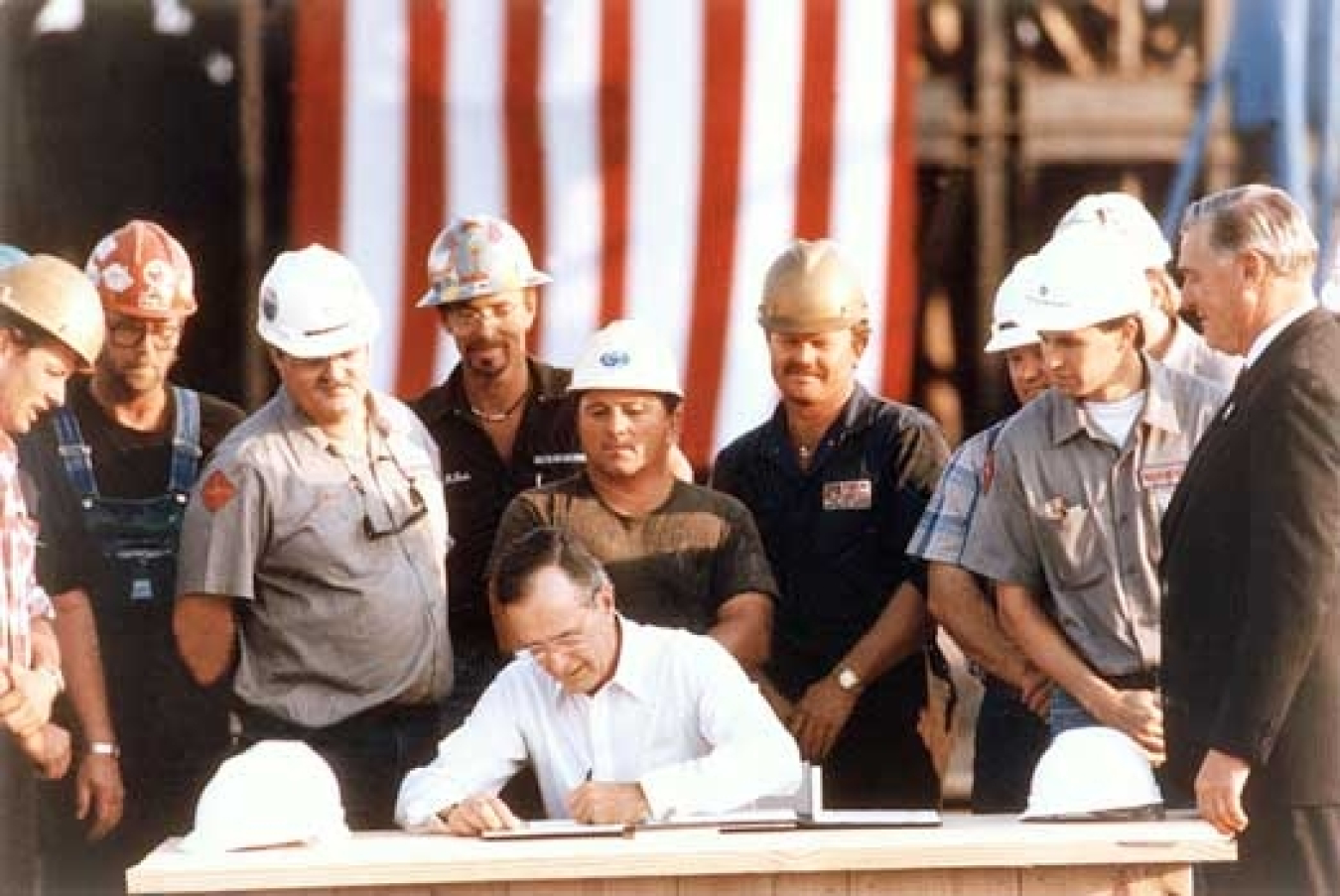A look back at a few of the important Energy Department milestones during George H. W. Bush's presidency.
December 4, 2018
President George H.W. Bush signs the Energy Policy Act of 1992.
George Herbert Walker Bush, the 41st President of the United States, passed away on November 30 at the age of 94. He was president from 1989 to 1993, some of the most pivotal years in world history.
During his term, the Cold War ended, the Berlin Wall fell, and the United States won the first Gulf War with the help of an international coalition consisting of dozens of countries. As America mourns the loss of a remarkable, devoted leader and honors his life dedicated to public service, we take a look back at key events in Energy Department history during his administration.
Office of Environmental Restoration and Waste Management is established.
In the fall of 1989, the Energy Department established the Office of Environmental Restoration and Waste Management within the Department. The office consolidated and streamlined environmental and cleanup efforts that were spread throughout the agency. It was later renamed the Office of Environmental Management, which is tasked with cleaning up the nation’s Cold War environmental legacy resulting from five decades of nuclear weapons production and government-sponsored nuclear energy research.
Energy Department responds to the crisis in Iraq.
In August of 1990, Iraq invaded and seized Kuwait, creating a major international crisis. In response, Secretary of Energy James Watkins announced plans to increase oil production and decrease consumption to counter potential Iraqi-Kuwaiti oil losses.
The Cold War winds down and the nuclear stockpile is reduced.
As the Soviet Union began to collapse, President Bush and Mikhail Gorbachev signed the Strategic Arms Reduction Treaty in July of 1991. The bilateral treaty reduced nuclear weapon stockpiles to 6,000 accountable warheads. In September of 1991, President Bush announced additional unilateral cuts in the nuclear weapon arsenal. In May of 1992, Secretary Watkins testified before the Senate Armed Services Committee that for the first time since 1945, the United States was not building any new nuclear weapons.
President Bush appoints first woman to serve as Deputy Secretary of Energy.
In July of 1992, Linda Stuntz was unanimously confirmed as Deputy Secretary of Energy. It marked the first time a woman served in that position. As Deputy Secretary and in other roles at the Energy Department, Stuntz played a key role in developing and enacting the Energy Policy Act.
President Bush signs the Energy Policy Act.
In October of 1992, President Bush signed landmark energy legislation -- the Energy Policy Act of 1992 -- into law. The law contained more than two dozen subtitles that outlined ways to reduce dependence on energy imports, boost renewable energy production, and increase energy efficiency of buildings.
Paul Lester

Paul Lester served as Digital Content Specialist in the Office of Public Affairs.
Paul was born in Ohio but spent most of his life in Florida, where he worked as news researcher/archivist and online editor for the Orlando Sentinel.
He moved to Washington in 2008 for a web editor role with the Guardian before working as a contractor for the Wind and Water Technologies Office, Small Business Administration and Office of Energy Efficiency and Renewable Energy.
Paul joined the Energy.gov team in March 2015, contributing to Energy Blog and assisting with managing the Energy Department’s social media channels. When he’s not in the office, Paul can be seen slowly running around D.C. training for his next half marathon.


